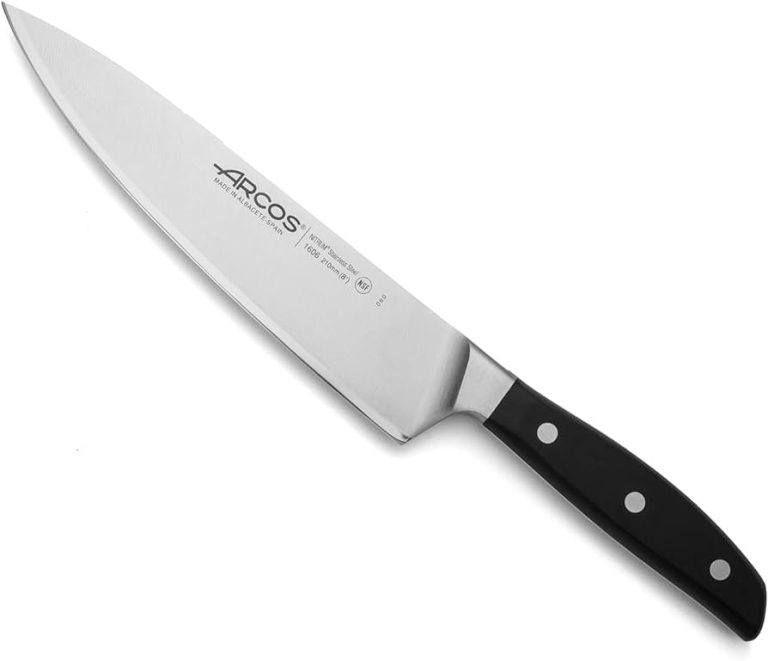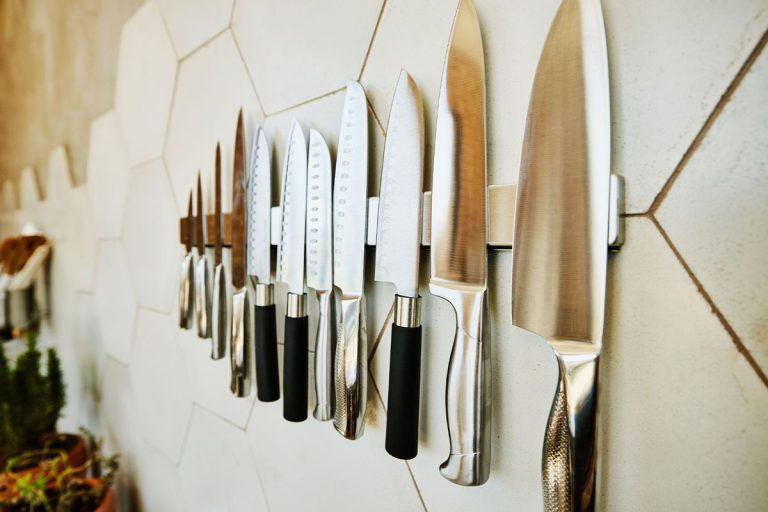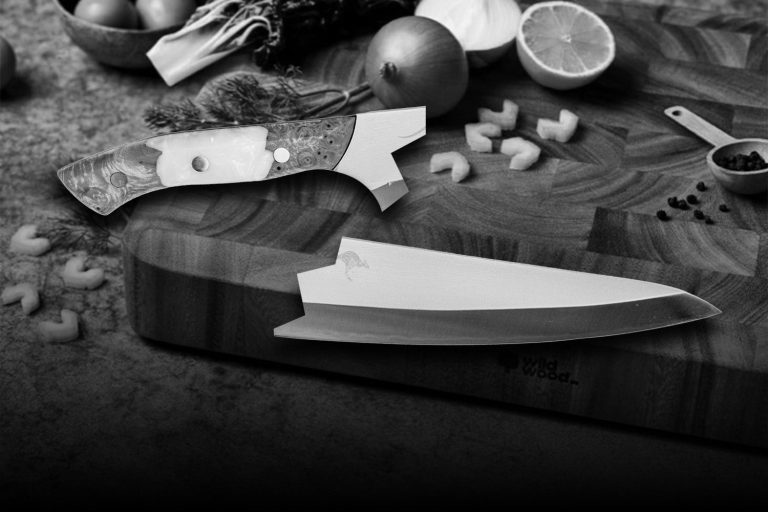Skinning Knives for Anglers
Skinning knives for anglers are essential tools used to efficiently and effectively clean and prepare fish for cooking or storage. The right knife allows anglers to quickly and cleanly remove the skin from the fish, ensuring minimal waste and maximum yield.
With a sharp blade and a comfortable handle, skinning knives enable anglers to fillet fish with precision and ease. Stainless steel blades are preferred for their durability and resistance to corrosion, while ergonomic handles provide a secure grip for safe and controlled handling.
Whether you are a professional angler or an occasional fisherman, having a high-quality skinning knife in your fishing gear is a must. It ensures the successful preparation of your catch, guaranteeing a delicious meal or a well-preserved fish for future enjoyment.
1. The Role Of Skinning Knives In Fishing
Skinning knives play a vital role in the world of angling. These specialized fishing knives provide numerous benefits that enhance the overall fishing experience. Firstly, their design and sharpness ensure clean and efficient fish skinning. The precise blade allows anglers to remove the skin with minimal effort and in a precise manner. This minimizes waste and limits damage to the fish.
Moreover, using a skinning knife improves overall fishing experience by making the cleaning process easier and more enjoyable. With a specialized knife, anglers can quickly clean their catch, resulting in less time spent on the cleaning station and more time on the water. Additionally, these knives aid in safer handling of the catch, reducing the risk of accidental cuts or injuries while removing the skin.
In conclusion, the proper use of skinning knives ensures efficient fish cleaning, limiting waste and damage, while providing a safer and more enjoyable fishing experience.
2. Choosing The Right Skinning Knife
When choosing a skinning knife for angling purposes, understanding the different types of knives available is essential. The three main types of skinning knives are fixed blade knives, folding knives, and replaceable blade knives.
Factors to consider when selecting a fishing knife include the blade material and durability, handle design and ergonomics, blade length and flexibility, and any additional features that may be useful, such as a gut hook or bottle opener.
Fixed blade knives are known for their sturdiness and reliability, making them a popular choice among anglers. Folding knives offer compactness and portability, while replaceable blade knives provide convenience by allowing for easy blade changes.
Blade material plays a crucial role in determining the knife’s durability and ability to retain sharpness, with stainless steel being a common choice. The handle design should provide a comfortable grip and ergonomic features to prevent slippage during use.
Consider the blade length and flexibility based on your specific needs, keeping in mind that longer blades may be more suitable for larger fish. Lastly, additional features like a gut hook can make the skinning process easier and help with other tasks while on the fishing trip.
3. Proper Skinning Techniques For Anglers
Proper skinning techniques are essential for anglers when it comes to preparing fish. The first step is to prepare the fish for skinning by cleaning it thoroughly. Holding the knife correctly is crucial to ensure precision and safety. When removing the skin, **smooth strokes** should be used to avoid damaging the flesh. **Cleaning and maintaining** the knife after use is important for its longevity. An angler must always prioritize maintaining a sharp and clean knife for efficient skinning. Remember, practicing these techniques will improve your skills over time, making skinning fish a smooth and effortless process.

Credit: www.amazon.com
4. Safety Tips For Handling Skinning Knives
When it comes to handling skinning knives safely, it is important to follow proper techniques to avoid accidents and injuries. One essential tip is to keep the knife sharp and well-maintained, as a dull blade can slip and cause accidents. Additionally, using protective gloves when necessary provides an extra layer of safety.
Another crucial aspect is ensuring a stable cutting surface. It is vital to have a firm grip on the knife and use a sturdy cutting board or surface to prevent any slips that may result in injuries. Lastly, storing the knife safely when not in use reduces the risk of accidents and keeps it out of reach from children or accidental mishandling.
5. Maintenance And Care Of Skinning Knives
Regular cleaning and drying of your skinning knife after each use is essential for its longevity and optimal performance. Make sure to remove any residue or debris from the blade and handle, using a mild soap and water solution. Pat dry the knife thoroughly to prevent moisture from causing rust or corrosion.
Sharpening and honing your skinning knife is crucial to maintain its razor-sharp edge. Utilize a sharpening stone or honing rod to carefully sharpen the blade, ensuring a consistent angle. Regularly check for any dull spots and address them promptly.
Applying lubrication to the blade and pivot points of your skinning knife will keep it functioning smoothly. Use a high-quality lubricant, such as mineral oil or silicone spray, to reduce friction and prevent wear.
To prevent rust or damage, it is important to store your skinning knife properly. Consider using a protective sheath or knife roll to keep the blade covered and secure when not in use. Store the knife in a dry place, away from moisture and extreme temperatures.
6. Recommended Skinning Knives For Anglers
When it comes to skinning knives for anglers, there are plenty of top brands and models to choose from. Whether you are a professional fisherman or just enjoy the occasional fishing trip, having a reliable and efficient skinning knife is essential. Here are some options that cater to various budgets and preferences:
Budget-Friendly Options:
1. Morakniv Companion – Known for its sharpness and durability, this knife is a popular choice for anglers on a tight budget.
2. Victorinox Swiss Army Fisherman – This multi-functional knife not only offers skinning capabilities but also includes other handy tools for avid anglers.
Mid-Range Choices:
1. Havalon Piranta Edge – Designed specifically for skinning, this knife boasts a replaceable blade system and a comfortable grip.
2. Benchmade Hidden Canyon Hunter – This knife features a fixed blade design, ideal for precise skinning and filleting tasks.
High-End Selections:
1. Wusthof Classic 7-inch Fillet Knife – Made from high-carbon stainless steel, this knife offers exceptional sharpness and strength for professional anglers.
2. Buck Knives 120 General – With a classic and timeless design, this knife combines elegance with functionality, perfect for seasoned anglers.
Remember, choosing the right skinning knife is a personal preference. Consider the blade material, handle construction, and overall quality to find the perfect tool for your fishing adventures.
7. Expert Tips And Tricks For Skinning Fish With Knives
Expert Tips and Tricks for Skinning Fish with Knives
When it comes to skinning fish with knives, there are proven techniques from experienced anglers that can help you achieve faster and more efficient results. Here are seven expert tips to keep in mind:
- Choose the right knife: Select a sharp and flexible knife that is specifically designed for skinning fish. This will make the process easier and minimize damage to the flesh.
- Start with a clean workspace: Ensure your cutting board is clean and free from any debris. This will prevent any contamination of the fish flesh and make it easier to maneuver the knife.
- Utilize proper grip: Hold the knife firmly but avoid exerting too much pressure. Maintain control and use gentle, precise motions.
- Begin at the tail: Start skinning from the tail end of the fish. Use light, sweeping strokes to lift the skin away from the flesh, gradually working your way towards the head.
- Remove the skin in sections: Rather than attempting to remove the entire skin at once, work in sections. This ensures better control and reduces the risk of tearing.
- Practice patience: Take your time and work slowly. Rushing the process can lead to mistakes and accidents.
- Watch tutorials and seek advice: If you’re new to fish skinning, watching video tutorials or seeking advice from experienced anglers can provide valuable insights and help improve your technique.
By following these expert tips, you’ll be able to skin fish with knives more effectively, saving time and achieving better results. Happy skinning!
8. Skinning Knives Vs. Multi-Purpose Knives For Fishing
8. Skinning Knives vs. Multi-purpose Knives for Fishing
Using dedicated skinning knives for skinning fish offers several advantages and disadvantages compared to using multi-purpose knives commonly used by anglers:
| Advantages of Skinning Knives | Disadvantages of Skinning Knives |
|
|
On the other hand, multi-purpose knives commonly used by anglers offer versatility as they can be used for various tasks beyond skinning. However, they may lack the specialized features needed for efficient and clean skinning. Anglers should consider their specific needs and preferences before deciding between dedicated skinning knives and multi-purpose knives.
9. Popular Myths And Misconceptions About Skinning Knives
There are several popular myths and misconceptions surrounding skinning knives that need to be debunked. First, many believe that any knife can be used for skinning, but this is not true. Skinning knives are specifically designed with a thin, curved blade that allows for easy and precise skinning of fish. Some also think that a sharp knife is not necessary for skinning, but a dull blade can actually cause more harm and create jagged cuts. Additionally, some anglers believe that skinning knives are only needed for larger fish, but even smaller fish can benefit from the use of a proper skinning knife. Furthermore, there is a misconception that skinning knives are difficult to clean and maintain, but with proper care, these knives can last for years. Overall, it is important to dispel these misconceptions and understand the value of using a high-quality skinning knife for angling purposes.
Conclusion
To recap, choosing the right skinning knife as an angler is crucial for a successful fishing experience. Investing in a high-quality, sharp, and durable knife will ensure that you can efficiently clean your catch. When selecting a skinning knife, consider the type of fish you commonly catch and the specific features you require.
The size, material, and handle design are all important factors to weigh in your decision-making process. Remember to prioritize safety by choosing a knife with a secure grip and reliable locking mechanism. Proper maintenance and regular sharpening will extend the lifespan of your skinning knife.
Whether you are an experienced angler or just starting out, having the right tool can make all the difference in achieving clean and precise cuts. So, make an informed choice, and enjoy preparing your fresh catch with a skinning knife suited to your needs.






